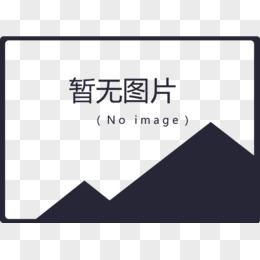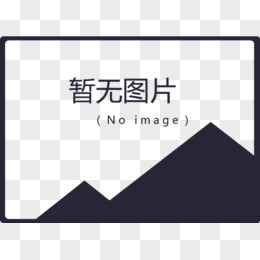在Cocos2d-x 绘图的方式有两种:1. 使用OpenGL的绘图原语DrawPrimitives;2. 使用DrawNode。本节中主要学习使用DrawNode来进行图形的绘制。
【小知识】
分段数:即绘制曲线一般都是通过绘制“样条曲线”来实现,而分段数即样条段数。
二次贝塞尔曲线:起点终点之间的一条抛物线,利用一个控制点来控制抛物线的形状。
三次贝塞尔曲线:起点终点之间,利用两个控制点来控制曲线的形状。
【DrawNode】
DrawNode由于在一个单独的批处理中绘制了所有元素,因此它绘制点、线段、多边形都要比“drawing primitives”快。
使用DrawPrimitives绘图原语绘制的图形,可以是实心的,也可以是空心的。
使用DrawNode绘制的图形都是实心的。
1、使用方法
创建一个DrawNode,然后加入到Layer布景层中,即可绘制各种形状的图形。
使用方法如下:
//
//创建DrawNode,然后后加入到Layer层中
DrawNode* drawNode = DrawNode::create();
this->addChild(drawNode);
//...基本图形绘制...
//
2、基本图形绘制
使用DrawNode来绘制图形,可以绘制如下几个图形。
圆点:drawDot
线段:drawSegment
三角形:drawTriangle
多边形:drawPolygon
二次贝塞尔图形:drawQuadraticBezier
三次内塞尔图形:drawCubicBezier
注:绘制的图形都是实心的。
使用方法如下:
//
//圆点 ('位置' , '圆点半径' , '填充颜色')
void drawDot(const Vec2 &pos, float radius, const Color4F &color);
//线段 ('起点' , '终点' , '半线宽' , '填充颜色')
void drawSegment(const Vec2 &from, const Vec2 &to, float radius, const Color4F &color);
//三角形 ('顶点1' , '顶点2' , '顶点3' , '填充颜色')
void drawTriangle(const Vec2 &p1, const Vec2 &p2, const Vec2 &p3, const Color4F &color);
//多边形 ('顶点数组' , '顶点个数' , '填充颜色' , '轮廓粗细' , '轮廓颜色')
void drawPolygon(Vec2 *verts, int count, const Color4F &fillColor, float borderWidth, const Color4F &borderColor);
//二次贝塞尔图形 ('起点' , '控制点' , '终点' , '分段数' , '填充颜色')
void drawQuadraticBezier(const Vec2& from, const Vec2& control, const Vec2& to, unsigned int segments, const Color4F &color);
//三次贝塞尔图形 ('起点' , '控制点1' , '控制点2' , '终点' , '分段数' , '填充颜色')
void drawCubicBezier(const Vec2& from, const Vec2& control1, const Vec2& control2, const Vec2& to, unsigned int segments, const Color4F &color);
//
3、清除绘图缓存
使用clear(),来清除之前使用drawNode画的所有图形。
//
drawNode->clear();
//
4、颜色混合方式
使用setBlendFunc(const BlendFunc &blendFunc),设置颜色混合的方式。详见:《颜色混合BlendFunc用法实例总结》
//
BlendFunc bl = { GL_ONE, GL_ONE };
drawNode->setBlendFunc(bl);
//
5、空心多边形绘制
使用DrawNode绘制的图形都是实心的,那么空心的怎么绘制呢?
从绘制图形的函数可以看出:图形绘制的同时,需要设置图形的颜色Color4F,其中也包含了透明度的设置。所以只要控制图形内部的填充颜色Color4F的透明度为透明(值为0),即可绘制出一个空心的图形来。
而能达到这种效果的,就只有多边形的绘制:drawPolygon 。

使用举例:
Color4F(1, 0, 0, 0) :红色透明
Color4F(1, 0, 0, 1) :红色不透明
//
Vec2 point[4];
point[0] = Vec2(100, 100);
point[1] = Vec2(100, 200);
point[2] = Vec2(200, 200);
point[3] = Vec2(200, 100);
//绘制空心多边形
//填充颜色:Color4F(1, 0, 0, 0), 透明
//轮廓颜色:Color4F(0, 1, 0, 1), 绿色
drawNode->drawPolygon(point, 4, Color4F(1, 0, 0, 0), 1, Color4F(0, 1, 0, 1));
//
【代码实战】
圆点
线段
三角形
实心多边形
空心多边形
二次贝塞尔图形
三次贝塞尔图形
颜色混合测试 { GL_ONE , GL_ONE}
//
//创建DrawNode
DrawNode* drawNode = DrawNode::create();
this->addChild(drawNode);
//圆点
drawNode->drawDot(Vec2(50, 50), 10, Color4F::RED);
//线段
drawNode->drawSegment(Vec2(20, 100), Vec2(100, 100), 5, Color4F(0, 1, 0, 1));
drawNode->drawSegment(Vec2(20, 150), Vec2(100, 150), 10, Color4F(0, 0, 1, 1));
//三角形
drawNode->drawTriangle(Vec2(20, 250), Vec2(100, 300), Vec2(50, 200), Color4F(1, 1, 0, 1));
//实心多边形
Vec2 point1[4];
point1[0] = Vec2(150, 50);
point1[1] = Vec2(150, 150);
point1[2] = Vec2(250, 150);
point1[3] = Vec2(250, 50);
drawNode->drawPolygon(point1, 4, Color4F(1, 0, 0, 1), 1, Color4F(0, 1, 0, 1));
//空心多边形
Vec2 point2[4];
point2[0] = Vec2(150, 200);
point2[1] = Vec2(150, 300);
point2[2] = Vec2(250, 300);
point2[3] = Vec2(250, 200);
drawNode->drawPolygon(point2, 4, Color4F(1, 0, 0, 0), 1, Color4F(0, 1, 0, 1));
//二次贝塞尔
Vec2 from1 = Vec2(300, 20);
Vec2 to1 = Vec2(450, 20);
Vec2 control = Vec2(360, 100);
drawNode->drawQuadraticBezier(from1, control, to1, 100, Color4F::ORANGE);
//三次贝塞尔
Vec2 from2 = Vec2(300, 100);
Vec2 to2 = Vec2(450, 100);
Vec2 control1 = Vec2(350, 0);
Vec2 control2 = Vec2(400, 200);
drawNode->drawCubicBezier(from2, control1, control2, to2, 100, Color4F::YELLOW);
//颜色混合测试
BlendFunc bl = { GL_ONE, GL_ONE };
drawNode->setBlendFunc(bl);
drawNode->drawSegment(Vec2(300, 250), Vec2(450, 250), 10, Color4F::GREEN);
drawNode->drawTriangle(Vec2(300, 200), Vec2(400, 300), Vec2(450, 150), Color4F::RED);
//
截图:

分析:
(1)可以看出,绘制的图形全部都是实心的。
(2)绘制的线段两边端点是一个半圆,这是因为线段是通过圆点画出来的。
(3)看到中间的两个矩形,一个是实心的,一个是空心的。
(4)实心的贝塞尔图形,看起来好奇怪啊。






